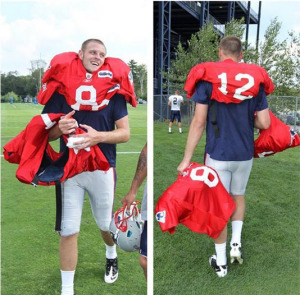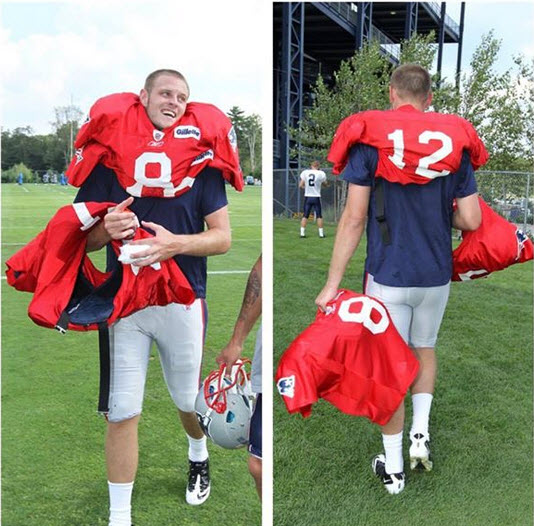
[Cross-posted on my company blog at http://hivetechhr.com/tom-brady-mentor/]
Last week, NFL quarterback Brian Hoyer led the Cleveland Browns to 24-3 victory over the Cincinnati Bengals. It was the Thursday night game, meaning that it drew a national audience, and it was also on the road to a Bengals team that had a better record than the Browns at the time.
Why, in the name of all things HR, does this matter? Because even though this blog post started with a game on November 6th, the genesis actually dates back to 2009 when Brian Hoyer was a backup to Tom Brady. So, this is a story about a mentor. In fact Hoyer was the benefactor of perhaps one of the best mentors a QB could have. The poise that Hoyer showed in that game was easily recognizable by those of us who have watched the Patriots for the past 14 years. In that time Brady has led the team to 3 Superbowl victories and countless other wins, particularly in big games.
Does that mean that 100% of Hoyer’s current performance can be attributed to Brady? Absolutely not. He still needs the raw motor skills, the intelligence and the work ethic it takes to be an NFL quarterback. However, the power of a mentor has been well-documented, and certainly watching and learning from one of the best of all time would explain at least some percentage of Hoyer’s current performance and future potential.
So, how well are organizations using the power of mentors to increase current and future performance? The answer in this writer’s opinion: not well. What qualifies me to be able to make that judgement? Because I’ve worked with literally 50+ companies in the past eight years on their HR systems, and in only 10% of those companies has the concept of mentors been something we’ve been asked to track. It’s not like we didn’t ask the question, but more often than not the response was, “well, we don’t really have a formal program.” The lesson learned by those of us who have spent our careers automating processes is that those things we don’t take the time to structure and track, don’t tend to get done. Mentor programs are no exception.
The plot thickens in the NFL as this weekend’s schedule features a game between not just one, but two of Brady’s former understudies. Ryan Mallett, QB of the Houston Texans, will face off against none other than Hoyer’s Browns this Sunday. Mallett is also a recent graduate from the MSB (Mentorship School of Brady), and the three of them actually occupied the same locker room in 2011.
Does everyone make for a good mentor? Definitely not. Does Brady sometimes exhibit behavior that someone wouldn’t want to mimic? Of course. In fact, without talking to all three of these QB’s, we don’t know exactly what the total impact would have been. But, a simple review of some of the things being written in anticipation of this game tells us that there was an impact. Also, if we’re able to see that the mentor still cares once they’ve moved on, then there’s a good indication that the level of caring was there while they were being mentored. We have evidence of that just yesterday, when Brady posted the following, accompanied by the picture from this post on Facebook. “#tbt to Ryan Mallett carrying Brian Hoyer’s and my pads after practice his rookie season. Times have changed! Good luck this weekend, guys! #muchdeserved.”
I’ve personally tapped HR Tech industry leaders on the shoulders in recent years, proactively seeking occasional mentorship. However, that’s not an approach that everyone feels comfortable with, nor should companies rely on that from their employees. They need to work harder at matching the Brady’s with the Hoyer’s and the Mallet’s, add some structure to ensure that it’s happening, and then watch them flourish in their footsteps…ideally while still playing for the same team.

